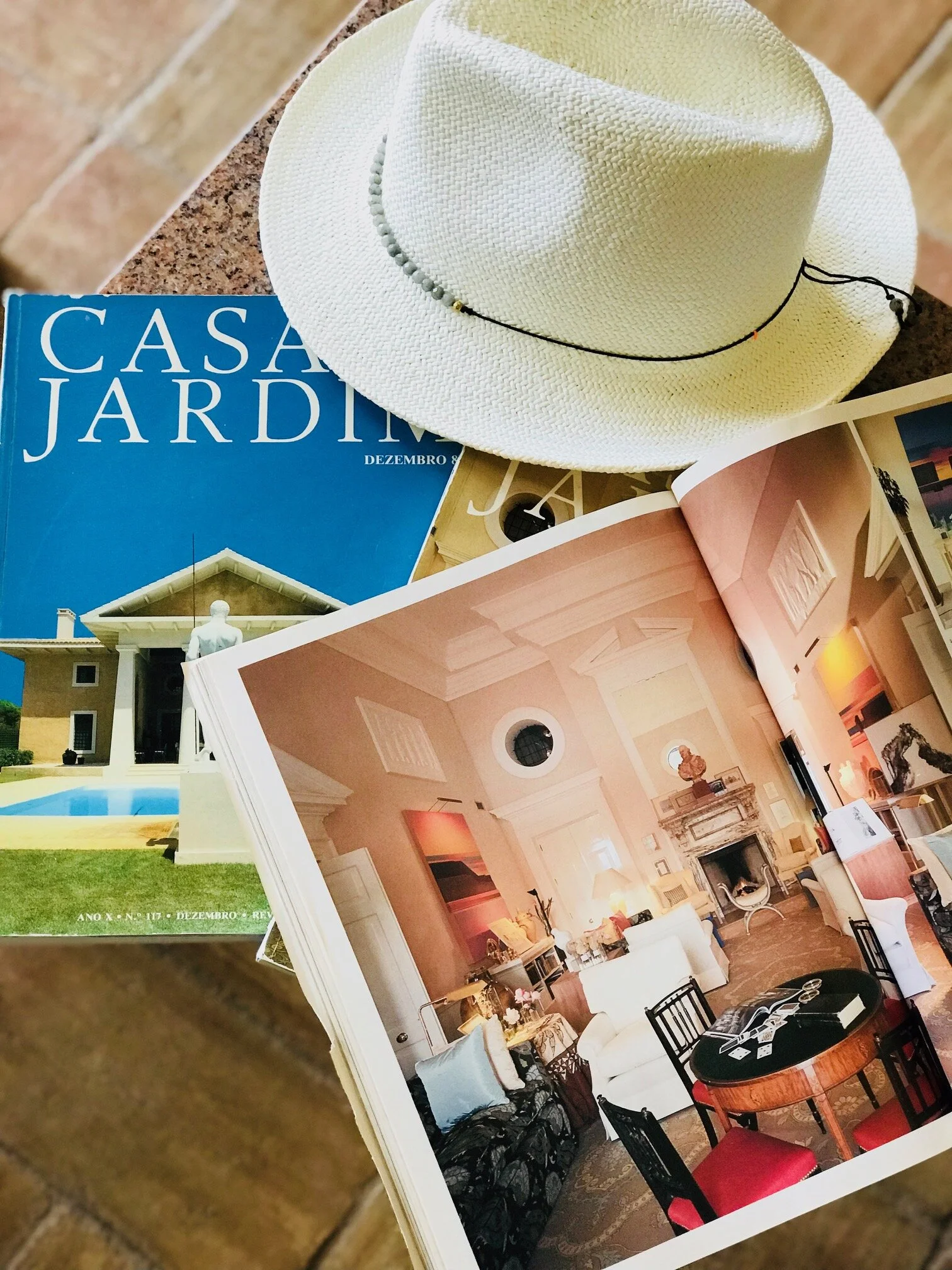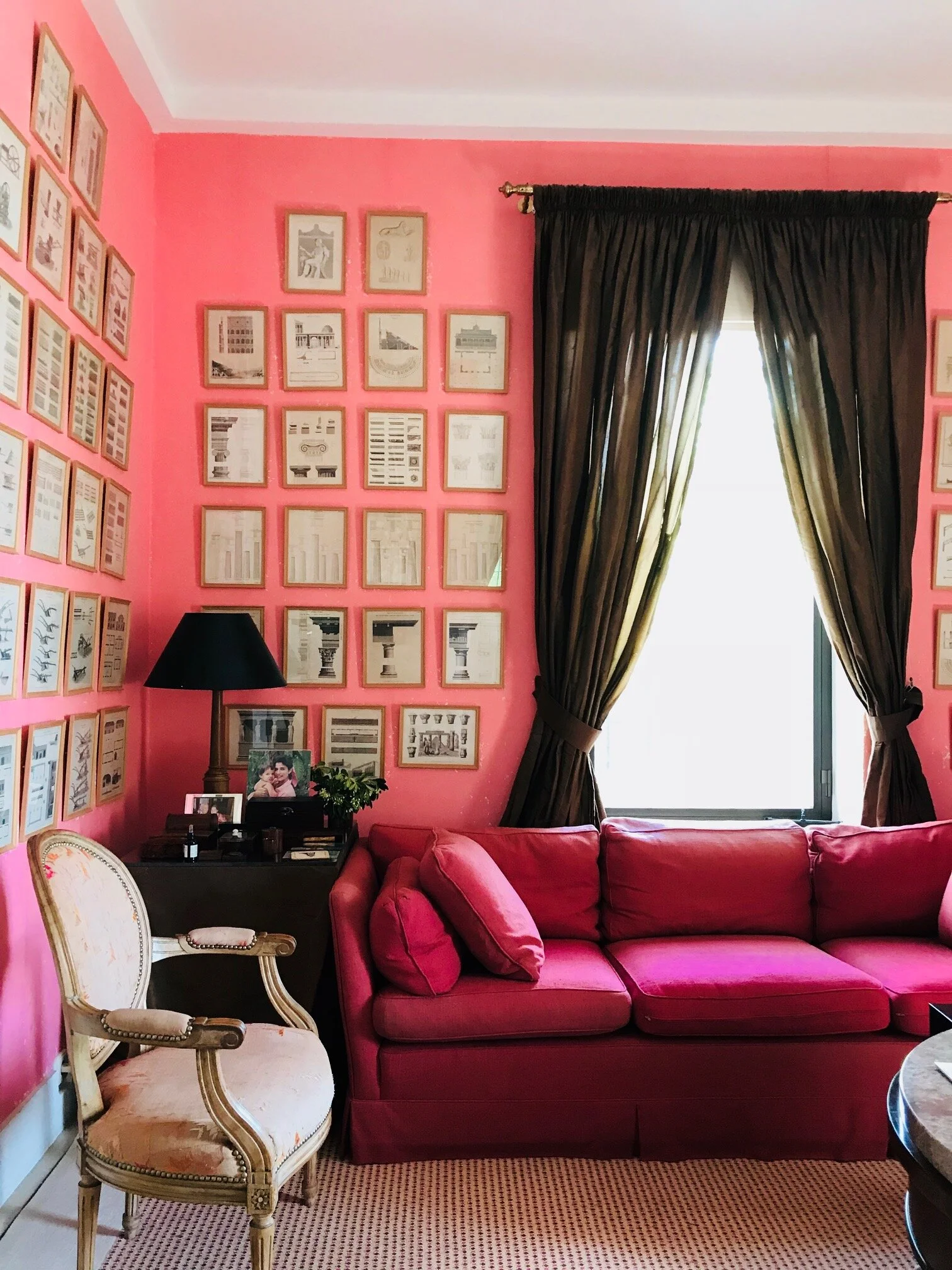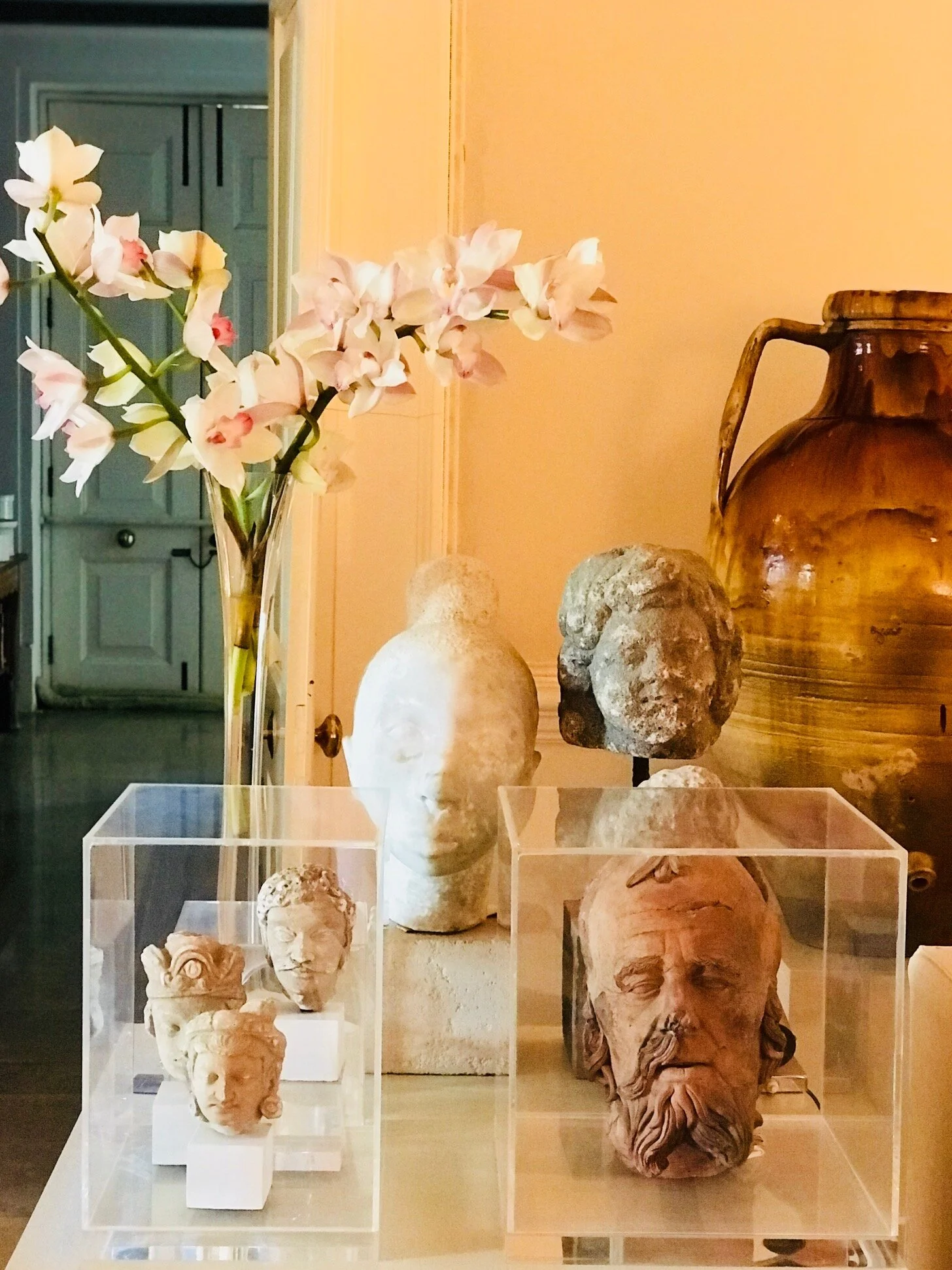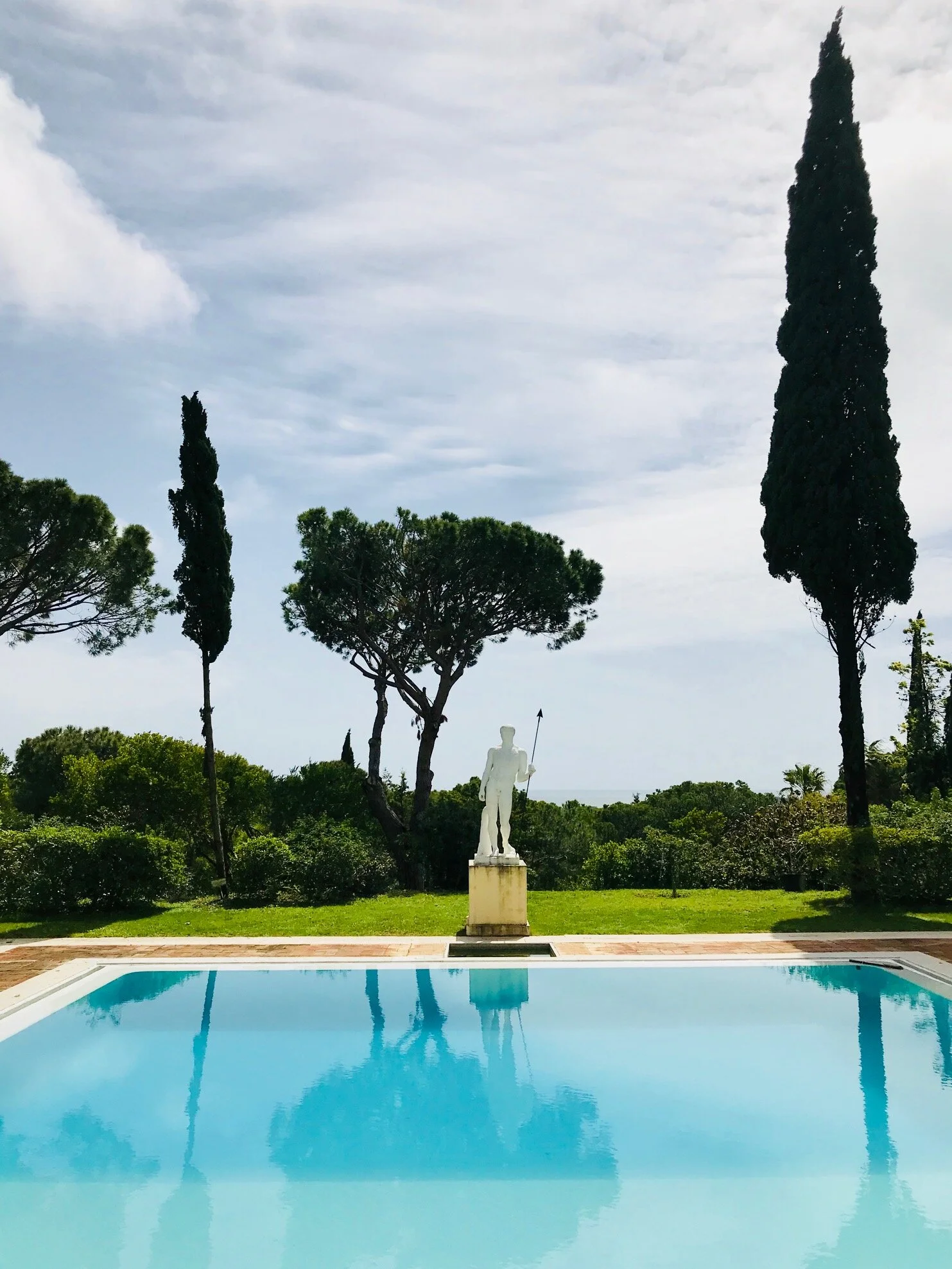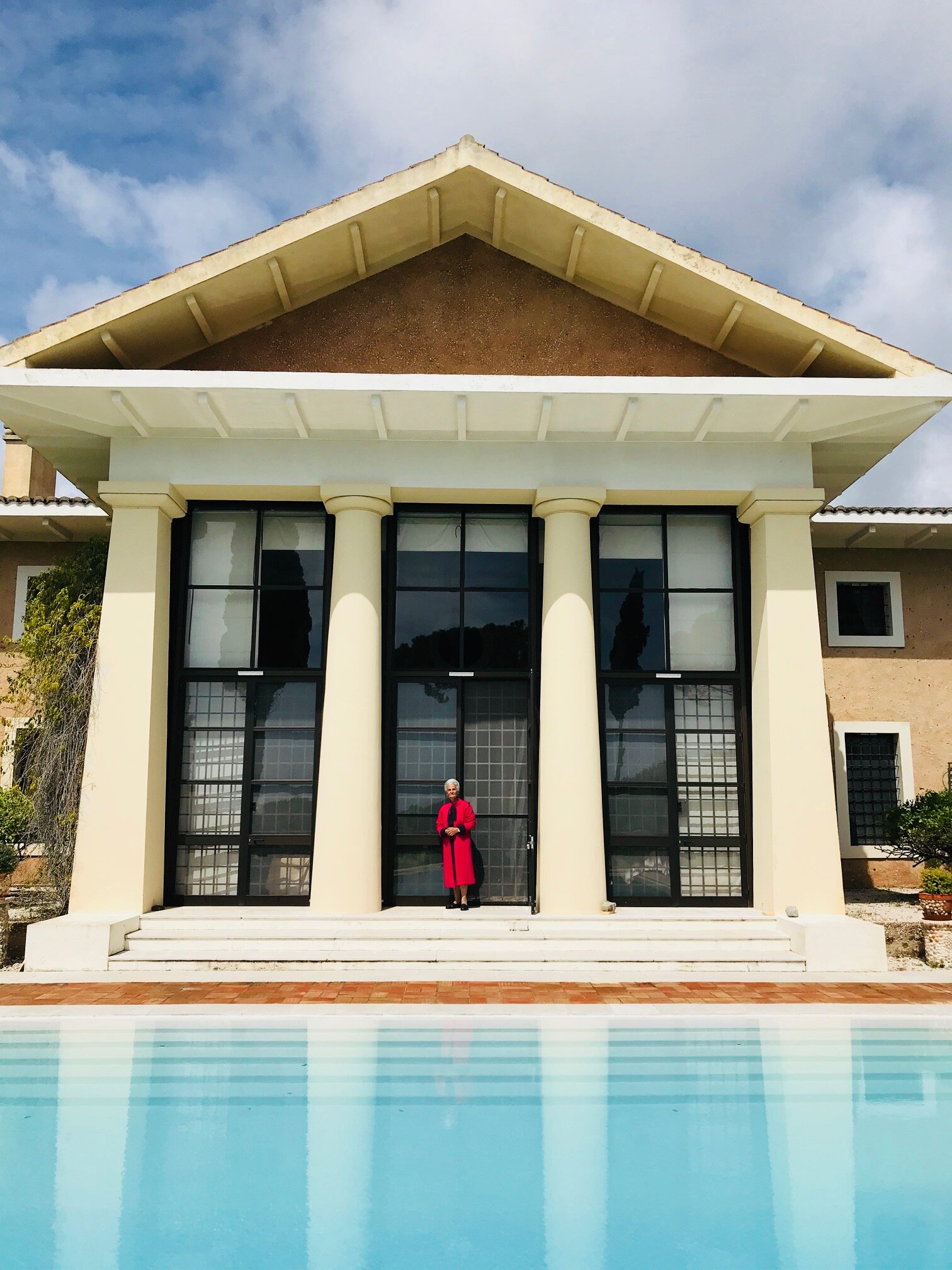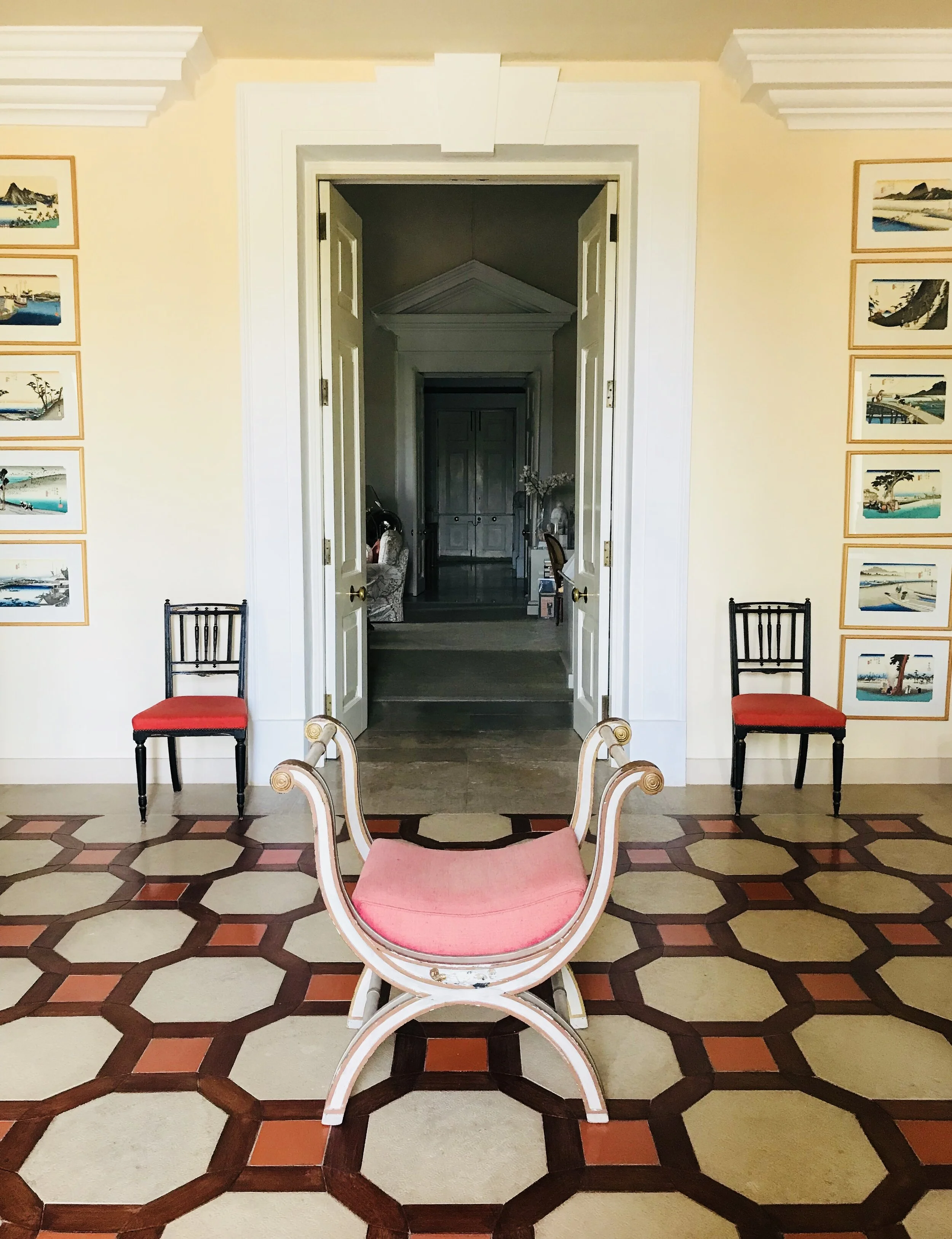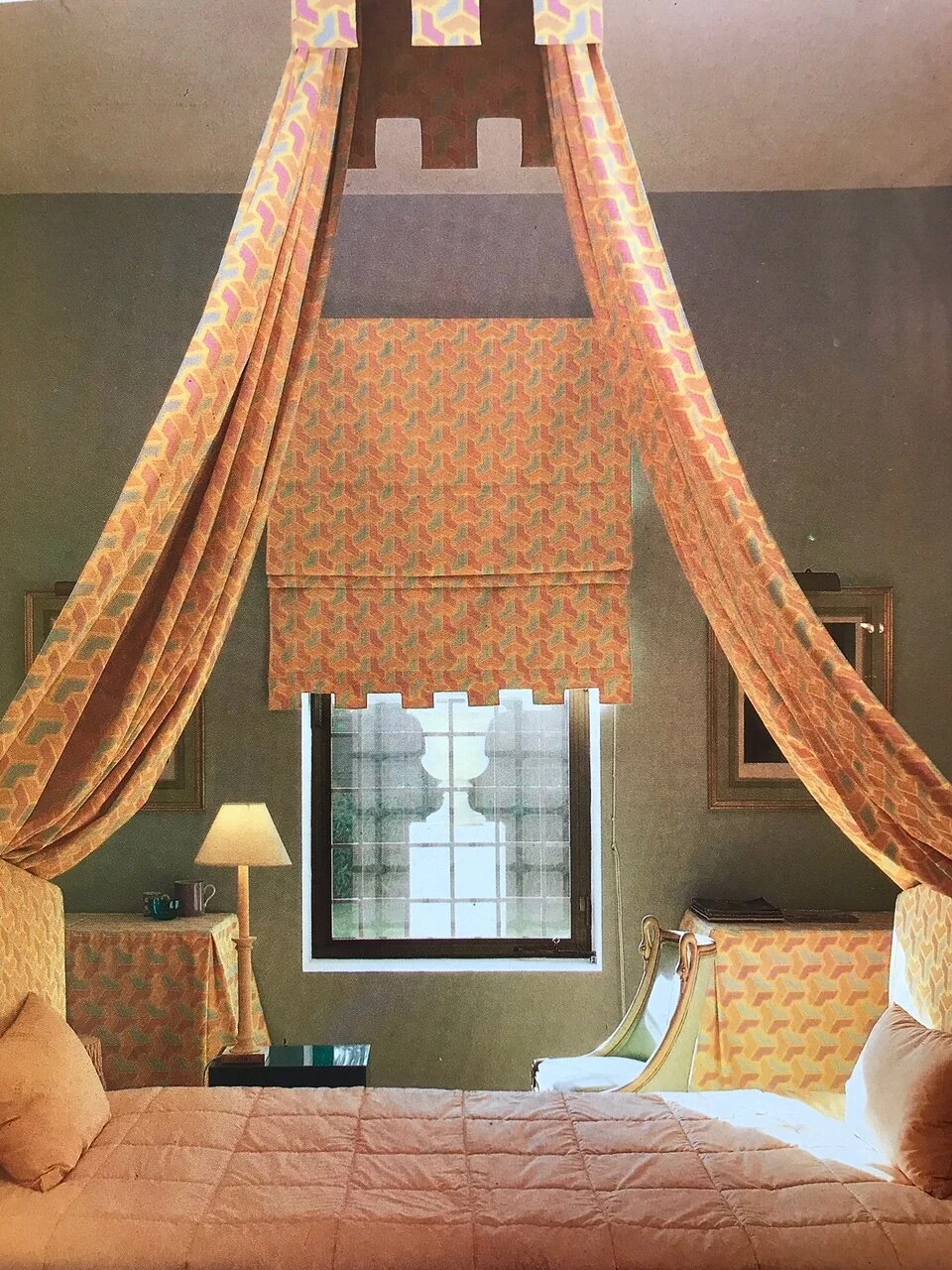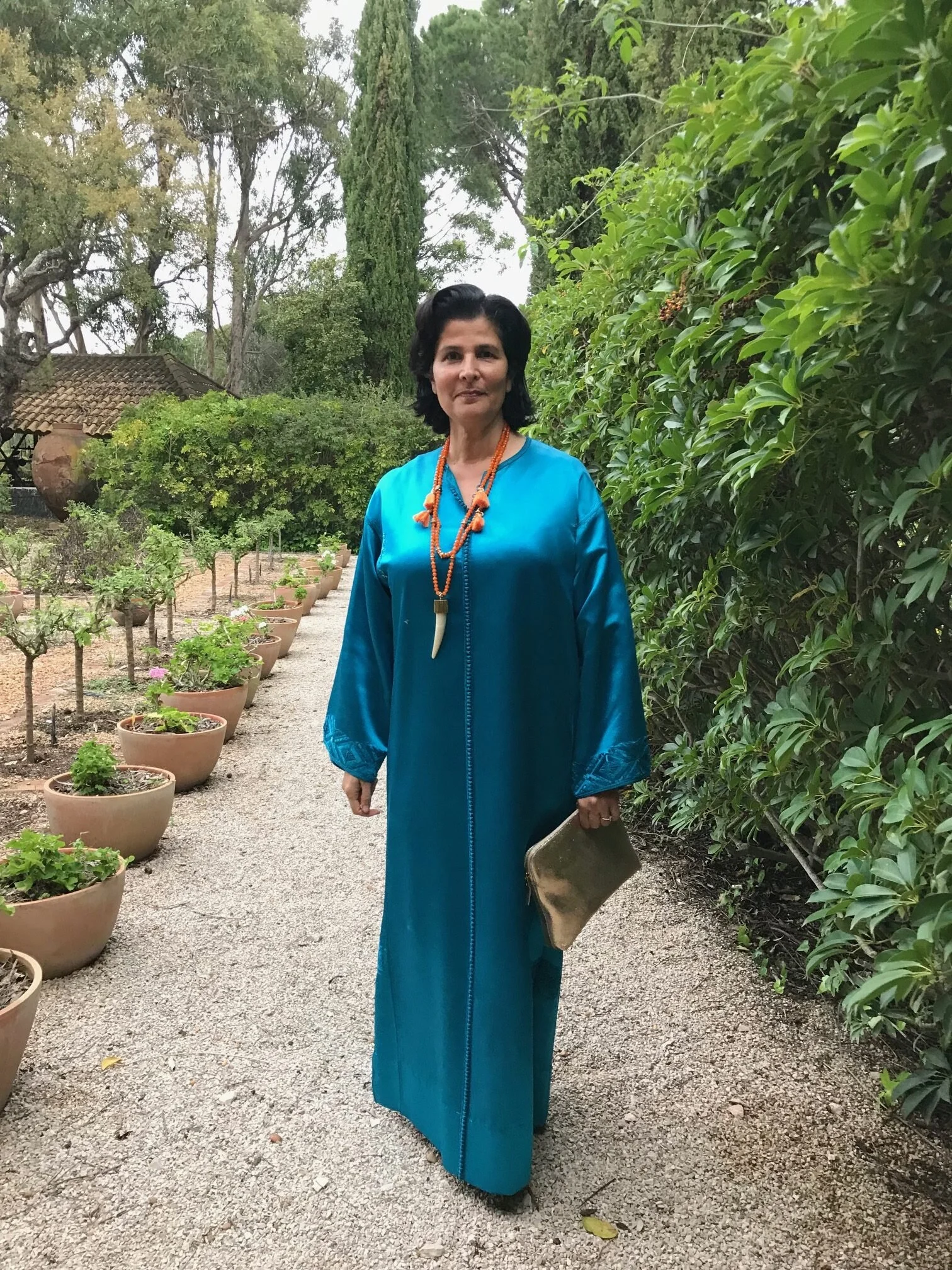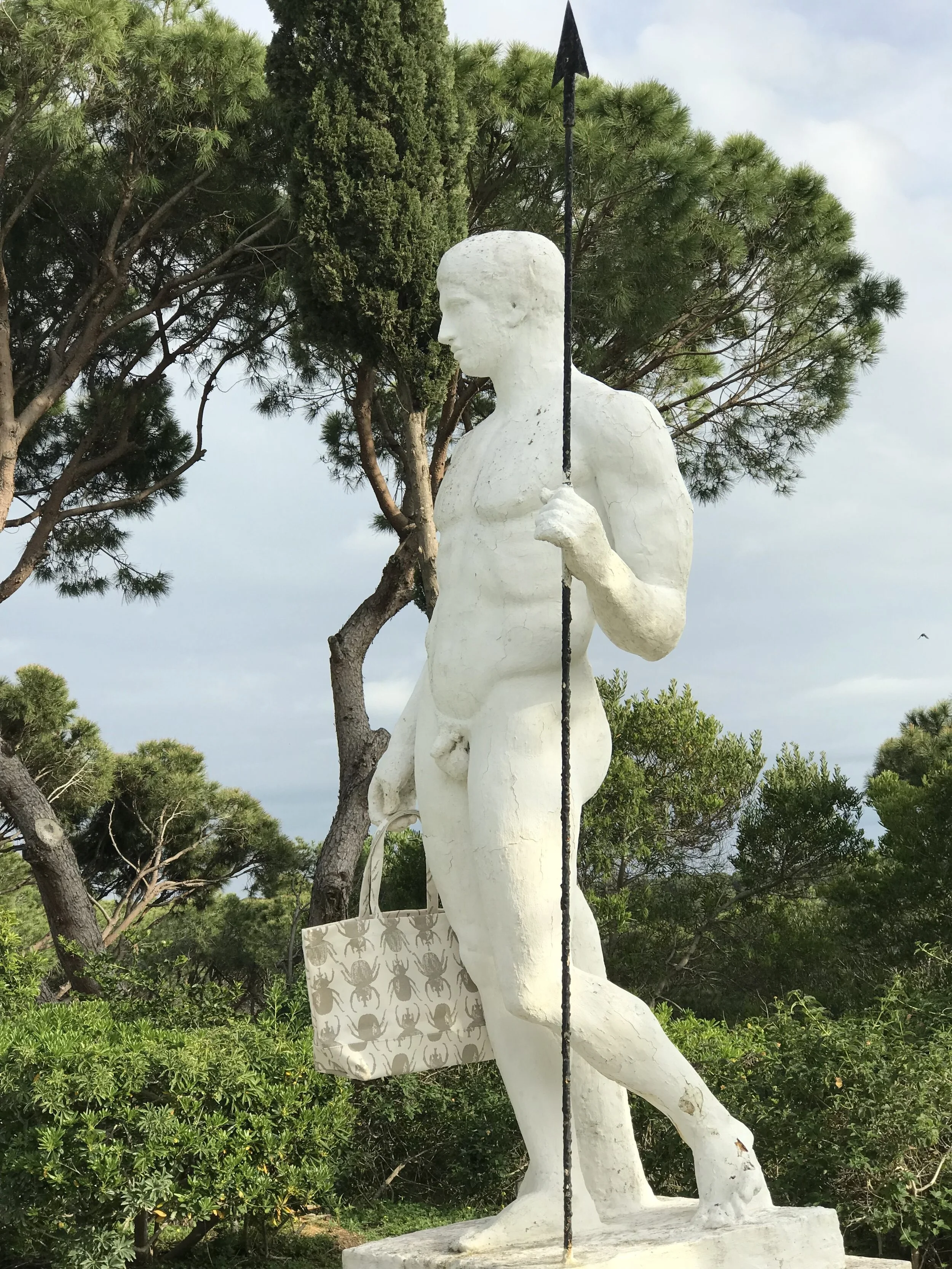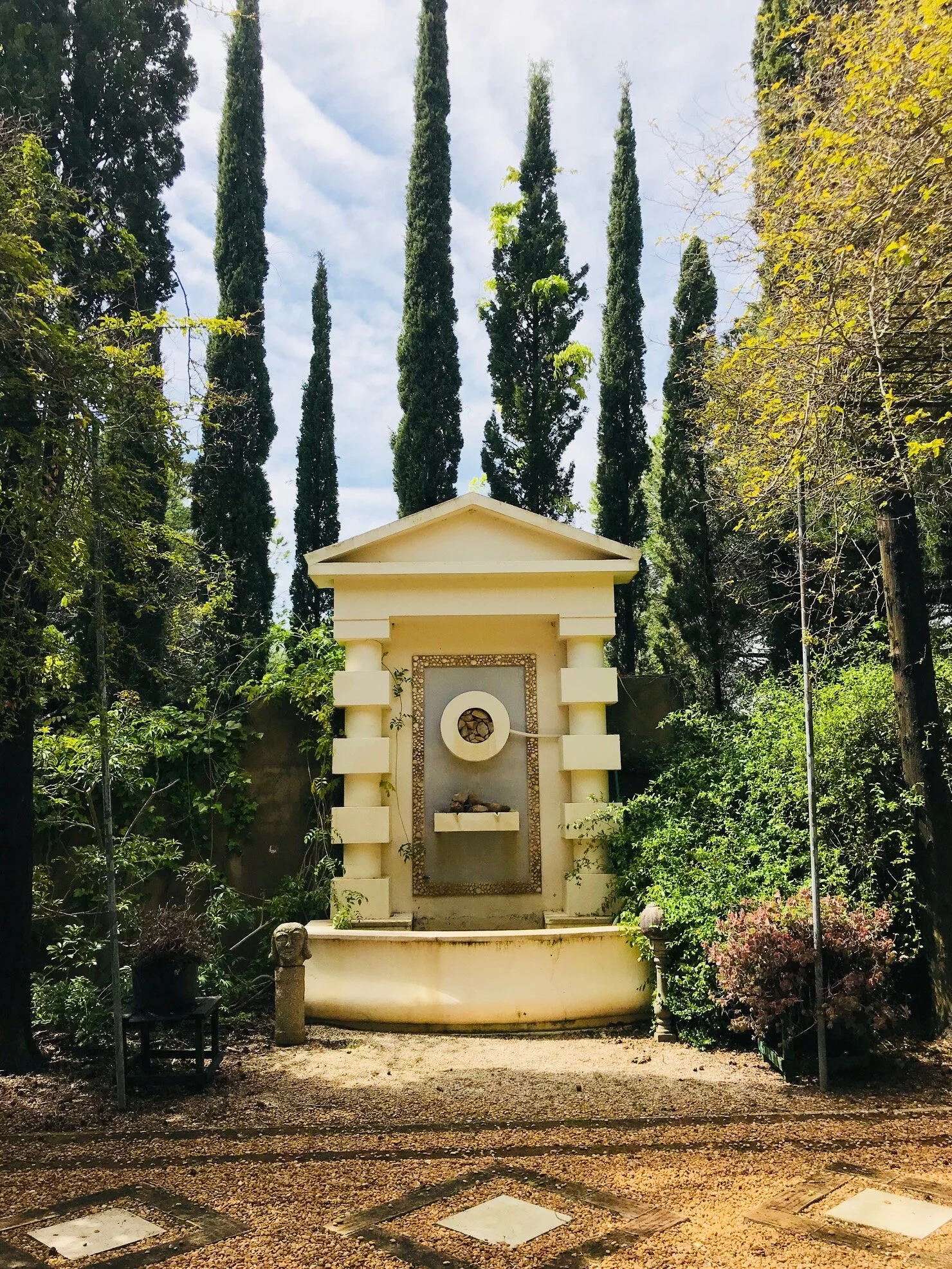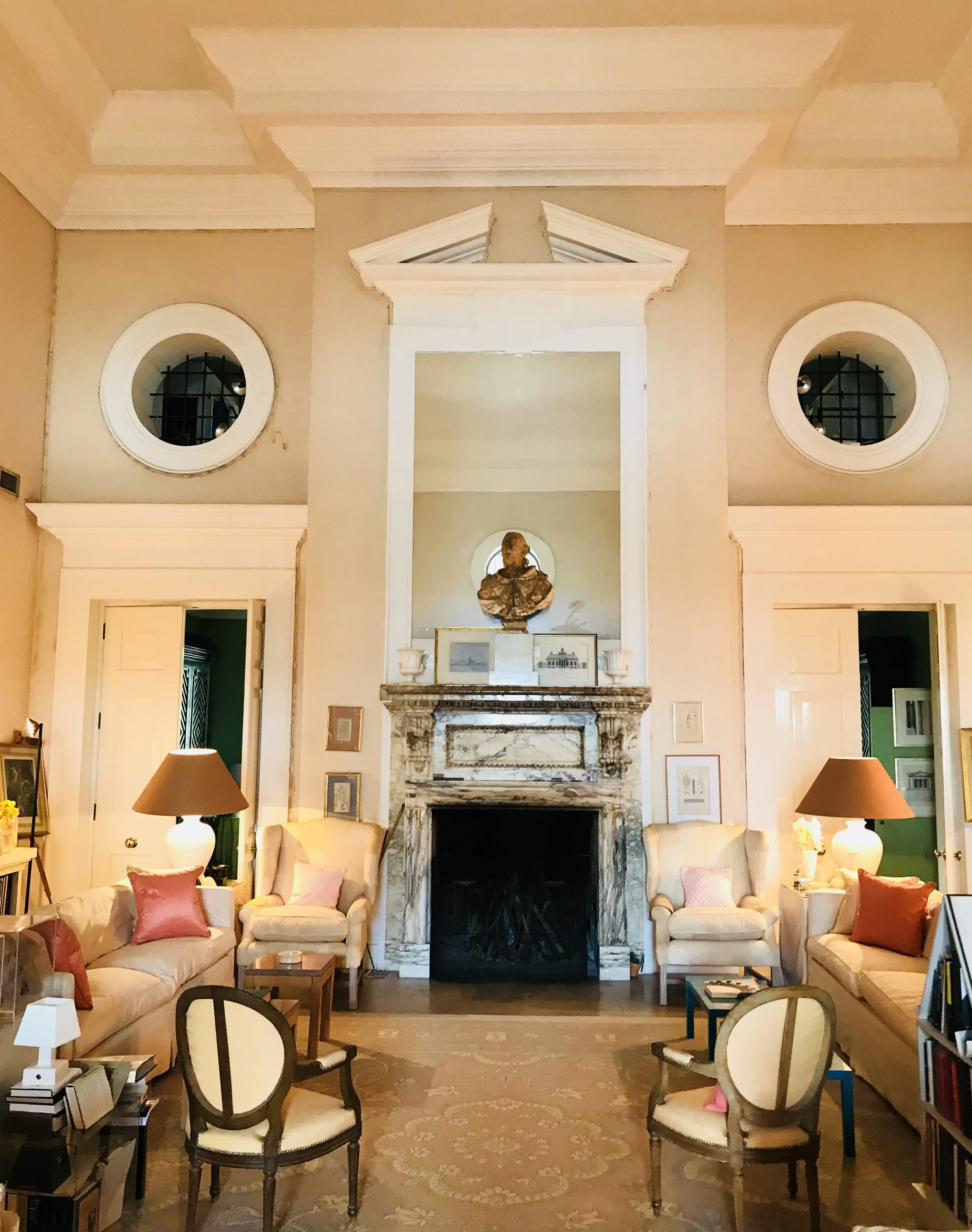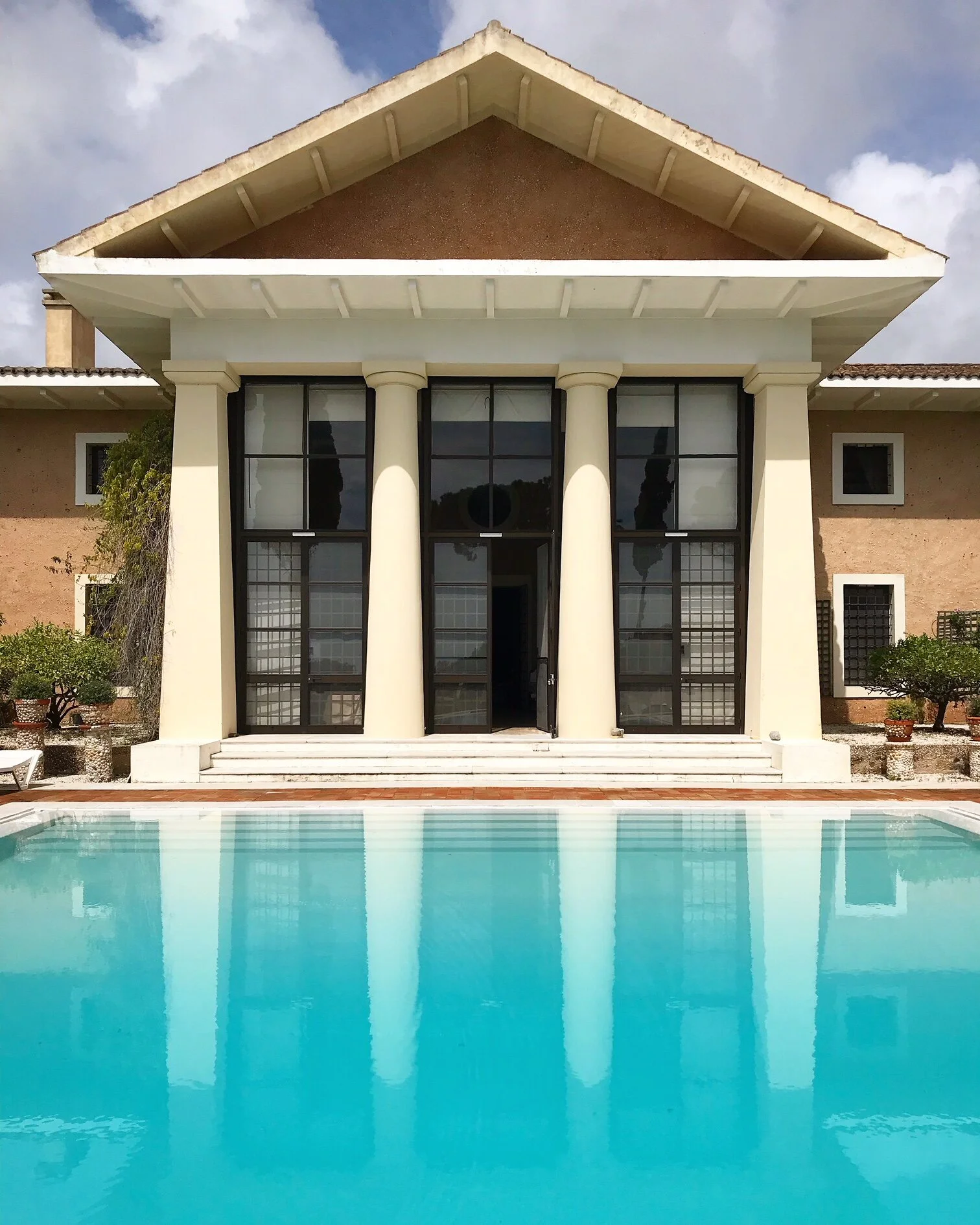VILLA VERDE
David Hicks, my father, found excitement in design concepts the way I do bungee jumping – but the Villa Verde was the leap of all time – a free-fall assignment that never stopped.
Amin and Nahid Ghani allowed his imagination full flight in this, the most comprehensive project of his career; he became the architect, interior designer, and landscaper. He commissioned the paintings and drawings and designed the furniture for specific positions.
In 1980, after my father had decorated the Ghani’s apartment in London and they had established a firm friendship, Madame Ghani invited my family to stay in her family villa in Portugal. On the second day she said, “David, I don’t think you like my house,” and he replied, “I could design a really beautiful one for you.”
The next day the house was up for sale. My father and the Ghanis found some land overlooking the sea on a hill with orange trees; there was no other building in sight.
He conceived a great classical Palladian villa with porticos on each side. An exterior of rough walls composed of orange sand, crushed seashells, and particles of stone and terra-cotta would form a pleasing contrast to the plain faux stone painted plaster of the columns and window surround. Now for details: Did Madame Ghani know what style of columns she would like? Did she know what kind of interior she preferred? Perhaps if they went around the world she could decide.
And so they went, twice around.
The villa took three years to build, and the Ghanis insisted that the Hickses should have their own rooms there. My mother wished her quarters (doubling as the principal guest room) to be decorated entirely in various whites. Local pure white cotton was used for the curtains, upholstery, and bed treatment, with an inexpensive white cord carpet covering the entire floor.
My father gave himself a room on the ground level (much the coolest), which was kept as his “holy of holies,” with a polished terrazzo floor laid as a single sheet. The bathe stands at the foot of the bed, in front of the Lois XVI marbleized ceramic fireplace.
Madame Ghani’s suite, comprising a bathroom, bedroom, and boudoir that ran the length of Villa Verde, seems fairytale of apricot cotton. The tester bed is lined with that fabric; the walls of the suite are entirely hung with it, pleated; and recesses to conceal hanging storage are curtained in the same material.
Although there is a separate dining room, the entrance hall to Villa Verde can seat twenty people for the Ghanis’ dinner parties at two red-granite-topped tripod tables set up upon a dramatic geometric floor. It is made of brush-hammered stone surrounded by limed teak, with glazed tile accents.
My father designed the salon’s large Persian-style carpet in pale blue, stone, yellow, pink, and bronze. The salon dominates the house and is especially dramatic at night. There are no curtains because the loggia is always lit after dark. Extremely important to Madame Ghani was a card room where she can hold bridge parties. The walls had to match the bright pink of the lining of an envelope she had been sent, and so a special wallpaper was printed. Unlined silk taffeta curtains tête-de-nègre filter the light and four French armchairs are covered in melon-colored silk.
My mother recalls that just after the completion of Villa Verde, sitting on the front portico with the Ghanis one warm evening, she spotted a crowd of people at the gates below. One man approached the home. As she neared, the family recognized the foreman. He explained that the people gathered below were the families of all the carpenters, plasterers, painters, and plumbers who had worked on the building. They had come to prove that the “palace” they said they had built really did exist. And almost forty years later that “palace” in Portugal still stands as a proud tribute to the Ghanis for allowing my father to free-fall to such a spectacular landing.

